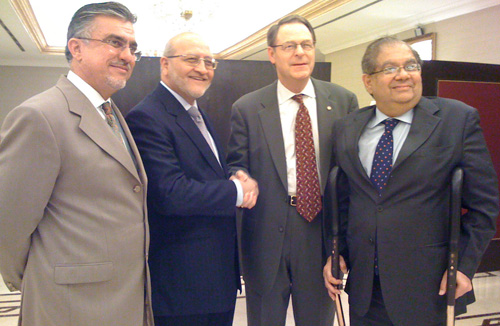San Fran-based content strategist Eccolo Media has released a survey of US businesses that suggests white papers are the most important and influential pieces of collateral used in technology buying decisions.
The B2B Technology Collateral Survey of American businesses was done with more than 500 technology-purchasing decision makers and it confirmed, Marketing Charts reports, “that sales materials of any kind – white papers, case studies/sale sheets, podcasts, videos, product brochures and data sheets – are most frequently consumed at the beginning of the sales cycle – before a company ever invites vendors to participate in an RFP.
Collateral subsequently is used less frequently as sales relationships evolve, the survey found.
Additional survey findings:
– 77% of respondents say they’d read at least one white paper in the last six months, with 84% of them rating white papers as moderately to extremely influential when making technology-purchasing decisions.
– Nearly half (49%) of respondents say they had watched a vendor’s video while considering a technology purchase, up from 20% in 2008.
– Collateral is more viral than ever: 89% of respondents say they share white papers with others, while 85% share case studies, 81% share brochures or data sheets; 80% share podcasts; and 79% share video.
– People prefer to consume collateral from their desktop: Only 1 in 4 surveyed even print out an online document.
– Data sheets and brochures are considered least influential written collateral but were also the most consumed type, indicating they are still valuable “table stakes” in helping solidify a brand’s product messages with potential buyers.
– Podcasts are, when compared with other types of collateral, among the least influential; Case studies – preferably thoses that are written – are gaining in influence.”
The report also indicated that good writing really matters.
“Some 86% of respondents felt that high-quality writing was at least moderately influential and 51% ranked good writing as either very or extremely influential. By contrast, poor quality writing was the most frequent reason respondents gave for decreasing the influence of a white paper.”
This is, of course, all quite lovely to read, given that I do things like white papers and case studies for clients. BUT, as you might expect, a white paper or case study will not be valued just because it has that label in the heading. It still has to be good, and make sense.
There are many ghastly white papers circulating in this industry that are nothing more than pitch pieces for their clients, the equivalent of recipes that suggest the only way to make desserts is with a certain brand of flour or peanut butter.
Good white papers that people appreciate,save and circulate are ones that really do educate and guide. The writer/vendor gets the benefit of making it clear they know their stuff, and helping prospective clients NOT make some stupid rookie mistakes.
Good white papers also take good writing. It absolutely doesn’t take a degree or career in journalism to qualify as a good writer. I used to be an editor in charge of some “journalists” who, to my mind, were damn near functionally illiterate. On the flip side, I have read stuff by people with no background in the craft who write beautifully.
If you have the skills and the time to write about what you do and what you know, you are the best person to do it. If you know you will never get to it, or your output will be in Martian, get somebody who CAN do the work and who, ideally, understands what on Earth you are up to.
As the research is showing, clients place a lot of value in this material and in relative terms, it is very low-cost, low maintenance marketing.
